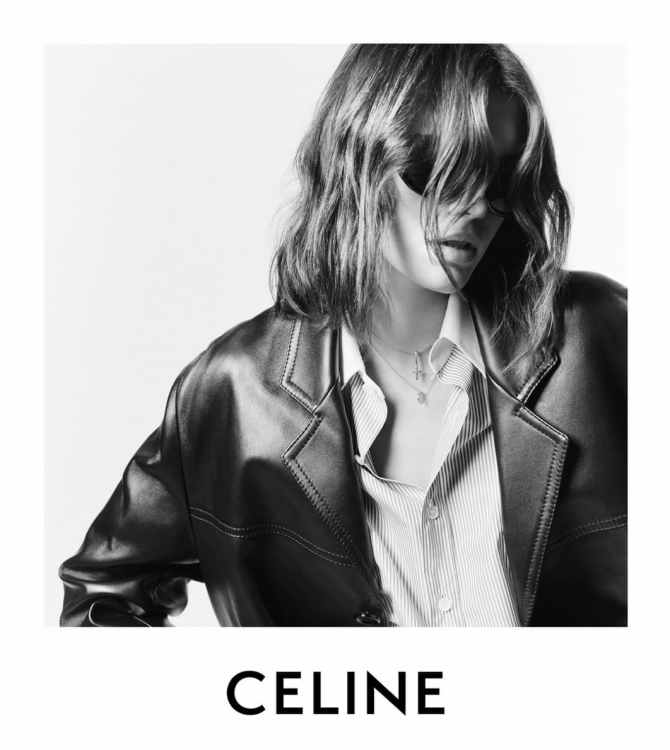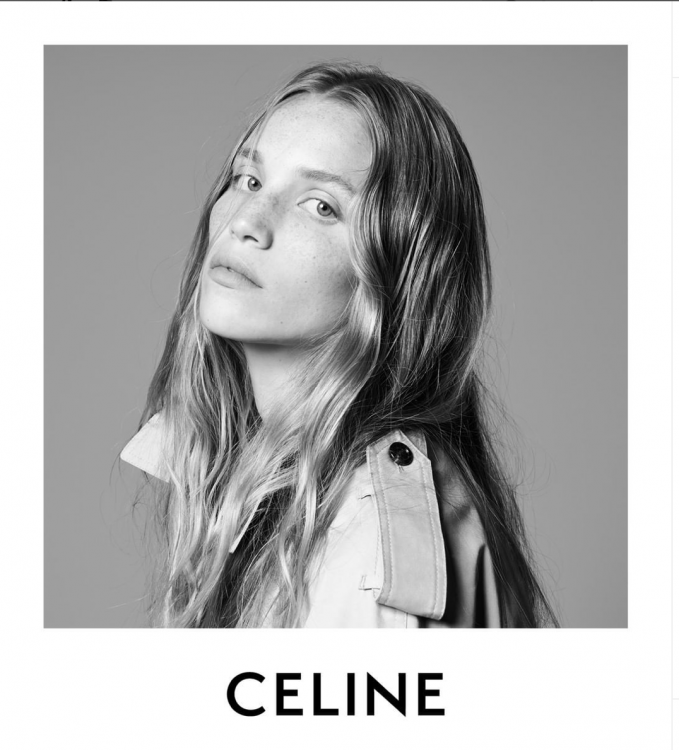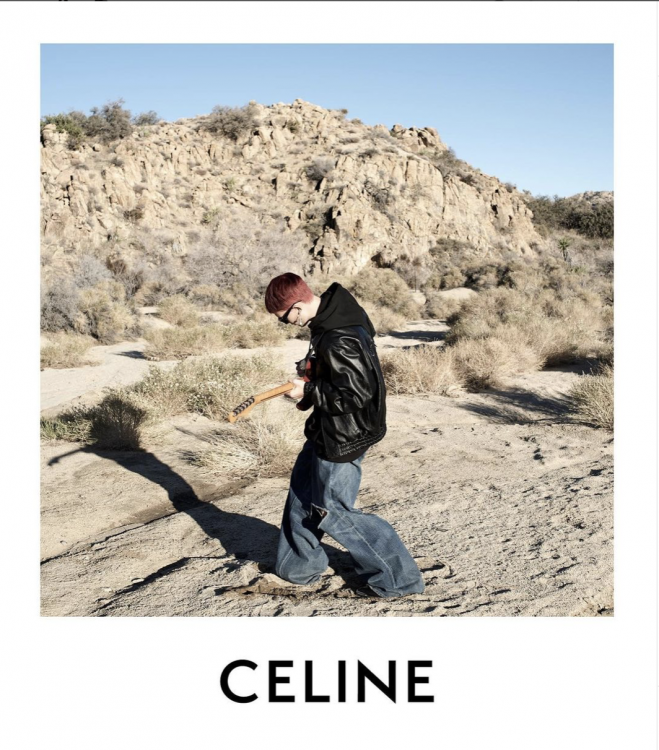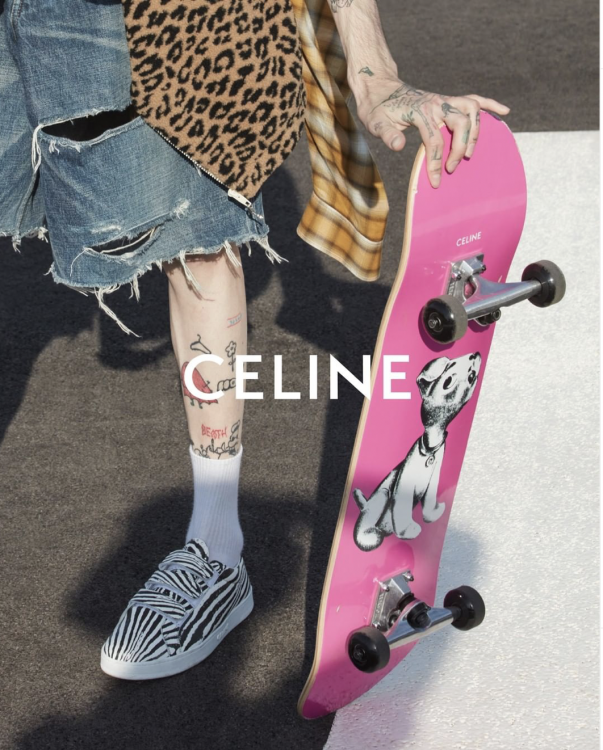-
Posts
2,597 -
Joined
Content Type
Profiles
Forums
Articles
Everything posted by Django
-
We're a little off-topic but it does relate to high-resolution which is a running theme so I say we get a pass. Zero photography sounds a little extreme/unlikely no? Like you said there is motion blur but also surely you use flash/sync in low-light situations like church/mairie and during the evening? Or perhaps slow-exposure and shallow DoF which could be harder to manage in video. I don't see 4K/6K/8K as a replacement for photography but rather a supplemental source for specific extraction. Sport/Action shooters are probably the ones that benefit the most from that. Z9 even has a 120fps burst mode in photo mode that I suspect engages 4K120p and converts each frame to jpg.
-
Oh I agree, C70 won't be as popular in rental houses or green-screen studios etc due to lack of SDI's & mini XLR ports. But also lens system. Sony has a Pro Cine zooms and such whereas RF is basically just photo lenses as of right now. That's actually a major factor that places the FX line way ahead of C70. The Vari ND is also a killer feature. I guess thinking of it more, the FX6 is really growing on me. Maybe I should consider upgrading to it from my FS7?
-
@MrSMW Yeah I've done my share of weddings.. never had such issues with guests but I can only imagine lol. For me though, the complicated thing as a videographer was always.. getting along with the photographer. 😉 There is this sort of unsaid hierarchy where they precede you, and might not get out of the way when you're also trying to get that money shot (kiss, ring etc) . Of course this may just be isolated poor experiences and with most pros we'll discuss/arrange in advance positionning but it ain't always easy, weddings often get hectic. Working solo on photo/video duties would sure simplify those situations but what a task! Is that what you usually do? This is a type of gig where I'd imagine that 8K could really be beneficial as you could film and extract stills (at least when lighting conditions allow it).
-
I don't think I've ever used the SDI ports on my FS7 so not a big deal for my type of shooting. C70 is definitely more of a solo operator, run & gun cam. The form factor is also something to consider. There's a real market for that segment although I agree it doesn't overlap with FS7/FX9 market. Again with internal RAW coming and the C300mk3 DGO sensor it can be a valid option over an FX6 as this user explains why he switched:
-
I should add that even when shooting on iPhones, we're not just shooting it handheld like dummies. We're using tripods & gimbals, shoot with Filmic Pro which allows shutter angle, ISO control, Manual focus etc. We try and use original camera movements or angles a smartphone may open-up, shoot under water/rain/snow conditions etc. On a related note, clients can be very curious about your gear and I've had some cringe moments when they'll say: my partner, brother, son-in-law has that same [5D3/A7S/XT3/R6] semi-implying you're an amateur. Or worse you'll show up at a gig with a hybrid and some assistant might ask: is a photo shoot planned today? You have to learn to laugh it off. But sometimes looks do matter as superficial as it may sound. On certain comfortable budgets I've been told to avoid hybrids (even when they might suffice) and bring the cine cam. I guarantee no snarky comment when I rig up the FS7/C200. With BMD/RED on set clients are straight up intimidated and it could go the other way and make talent nervous. So I guess "aesthetics" also applies to hardware cosmetics at times!
-
Not many people are actually delivering in 8K aside from a handful of YT channels and 1 or 2 TV networks in Japan. The point of 8K today is really getting great 4K deliveries or extracting stills. Just like Yellowstone is shooting on an Alexa in 3.2K for 720p/1080i delivery. It's actually oversampled acquisition. It's not at all about cropping 400% into someones face. Does a medium format portrait photographer on a 100MP Hasselblad publish stills zoomed into the nostril or eyeball of his models? Of course not and the same common sense applies to high res video. It's not a bad camera at all, especially if you shoot in RAW. But the h264 4K on it is really soft (whereas the C100 had the best oversampled FHD). C200B kinda sucks too, you'll have to buy the over-priced LCD just to get touch AF, same with top handle and side grip. Then all of a sudden you're in R5C/C70 territory. So yeah I'd wait until it drops some more if you're eyeballing it. EF mount is about to be phased out and all those C cams are dropping in value like crazy. I don't personally specialise in these type of gigs but what I can tell you is this: the camera itself isn't really where the production costs are: gathering talent, locations, directing, scripting, editing etc however are. shooting with an iPhone can also bring its own share of challenges, the cameras suck at low-light for ex. Which is why sometimes we'll actually use a mirrorless to emulate a smartphone look. Finally the overall budget and profit margins are nowhere near what other big projects may involve, so in short no, not that lucrative. But It's an interesting alley to explore, shooting vertical isn't always as bad as people may think (there are ways to take advantage of it even).
-
My bad I didn't mean it in such a condescending way, I was still shooting myself on a FHD C100 not that long ago. Once I upgraded to a 5K iMac Pro, well that's when I realised that FHD footage wasn't going to cut it for me anymore. Even C200 4K looked terribly soft, so I got rid of both. (That and because of lack of 10-bit codec). Never looked back. I just feel sometimes that most people who hate on 6K/8K haven't really properly experienced it and the benefits it can bring. Having actually worked on 8K footage, I feel it can't be unseen. But I'm also on +4K monitors. So I guess I could easily reverse ignorance is bliss to upgrading can raise expectations. I'm not some kind of high-res fanatic though. I enjoy lo-fi aesthetics immensely as well. I just don't get this idea that high-resolution is somehow taking away from other IQ related specs. Pocket 6K & Z9 give you ProRes. 10-bit & 12-bit RAW are now internal. DR keeps getting better. Rolling Shutter keeps going down. Low-light keeps improving etc.. I never advised 8K for social media. An actual iPhone is usually enough to create.. an iPhone look. Anybody can shoot Portrait mode tho.. the cool kids are all about standing out.. and looking cool. Retro/nostalgia is a powerful thing. Gen-Z all about the 90's right now. Anything from clothing to technology to music, animes etc from that era is what's popping. For example Contax T3's are listing for $3K, you can thank YT/IG analogue influencers. oh yeah it's wild, experimental, artistic and funny !.. must see.
-
..and for actual French new-wave cinematographers absolutely check out Gaspard Noé. His latest is actually a movie about a movie shoot gone totally wrong because of director/DP/actors gone mad: shot on 35mm in multi-cam, displayed in split screen..
-
Actually living right here in Paris, France.. this does speak to me lol. FWIW Godard's last projects were actually done with rather low-budget digital camcorders, DSLRs etc.. but experimenting with 3D and heavily treated in post..
-
I think its the principle that it is easier to dirty something clean, then "enhance" something dirty/low-res. That said, nobody claimed +4K was necessary. On the contrary, shoot in 720p/1080p if that floats your boat. Never upgrade. Ignorance is bliss as they say! Just please don't complain about the tech moving forward.. Film photography is having a resurgence with Gen Z because its A) Retro so cool B) Analog vs Digital (which perpetuates this idea of Real vs Fake) C) Physical medium that they can touch. It's a bit like vinyl records making a come back for similar reasons. On the one hand yes, but it really isn't that simple when you actually think that 35mm film is approx equivalent to 20MP. Medium format can theoretically resolve from 80MP to 125MP. And Large format 300MP to 1,200MP. Of course this is greatly limited by optical lens resolving power and film adds all kinds of artefacts like grain/noise and has reduced DR etc. That immediately gives it an "old" feel. But one shouldn't mistake film = low res. What I'm trying to say is forget about resolution wars. The shift goes way beyond all these technical attributes, the fashion brands I'm talking about went from using A-list models, posing towards the camera in a studio background shot on Phase One in B&W... to faux-iPhone snapshots of popular Gen Z TikTokers in situ..
-
C70 is making waves and is pretty popular, and with the RAW light update it's only getting better. I'm split in between getting one and the R5C. Also a long-term FS7 user, this camera still does it for me in 2022. Absolute workhorse. Love the IQ in Cine EI mode. The shoulder mount ENG config is what sets it apart from the rest of the "budget" cine cams out there. Would love an FX9 but I can't really justify the $11K price tag upgrade.
-
@kye not only do I get what you're saying, I've rebutted every single "complaint" you've brought up about +4K resolution. ($1M budget VFX, battery life, color science, processing power, SD cards). like it or not, tech is moving forward. especially in mirrorless. BMPCC 6K Pro, R3/R5/R5C, Z9, S1H are paving the way with compressed RAW, 10-bit & 6K/8K. All specs you find in much more expensive cine cams. I call this progress. Of course that won't replace lenses, lighting, grading & skills. But the bottleneck isn't the camera anymore. In the end you're entitled your opinion (things were better a decade ago - i.e. pre-4K) but in that case, simply don't upgrade. problem fixed. Just saying.
-
Stabilisation, reframing & cropping aren't any kind of complex post techniques that would require $1M budget VFX unit. Any NLE has those features built-in and just about any one can take advantage of those benefits.. This is simply untrue. CamerLabs reported: R5C clips kept recording until its battery ran out after 53 minutes and 15 seconds of 8k 24p. That is outstanding battery life for a MILC, let alone in 8K. Add the power grip and that time is doubled. Only 8K60p requires an external battery. Color grading has various degrees of complexity but one can't deny its also become hugely accessible, especially thanks to Resolve which is basically free. I'm not even sure how you can start this "aesthetic" conversation with ARRI as a reference point if you're not willing to consider Log/RAW. No SOOC manufacturer profile will give you that million $ budget look you desire. LUTs can also bring you closer if manual grading is out of reach. So why wasn't LUT support there in HD/FHD/4K hybrids? Aside from Panasonic & BMD nobody else has been doing it. its got nothing to do with pixels but more about keeping cine features aside for various segmentation reasons. Stills PDAF system on Sony/Nikon/Canon hybrids may also be a CPU factor which is why R5C reboots into a cine OS (with DPAF1) when in video mode. Such a bizarre argument. I guess never upgrade towards anything with that type of logic?! Trust me when investing +$5K/$6K on a 8K camera body, a new SD card isn't what's holding you back financially. And on the economy side, cameras like BMPCC 6K allow you to record on a SSD via USB-C. That's cheaper buck/storage ratio than any card media. Sorry bro we get you're not ready to jump above 4K and that's fine but your logic is really starting to sound like straw man argumenting.
-
One of the great cine features that made it to R5C is LUT import support. I use this all the time on my FS7 in order to get specific looks SOOC (Venice, ARRI, Fuji/Kodak etc but also super custom LUTs). This opens up an infinity of SOOC looks as you are no longer reduced to the 5 or 6 manufacturer picture profiles. An essential feature when working on projects with fast turnaround. Different needs and different requirements.. for example Yellowstone is a a Paramount Network show, meaning it is broadcasted in 720p / 1080i (and in 1080p on streaming network). Meaning the Alexa Mini's 3.2K is more than sufficient. Quick search reveals this interesting info: We shot three-cameras most days, on the ARRI Alexa Mini and the ARRI Amira in ProRes 4444 3.2K, Log-C. We carried several sets of ARRI Ultra Prime lenses, and a selection of Angenieux zooms, including the 45-120 and the 24-290. I am a big fan of the Ultra Prime lenses for their simplicity and gentle rendering. I shot Wind River on the older ARRI/Zeiss Standard Speed primes and have always admired their elegant sharpness and gentle yet detailed falloff. The Ultra Primes carry that same DNA in a more modern housing, suitable for the scale of a production like this one. I find them unfussy and gently flattering, with just enough personality to enhance the natural lighting scheme we were striving for. I viewed on-set--and subsequently completed the DI--through a custom LUT I have been refining over several years.” Kind of ties in to what I was saying above about custom LUT support being such a great feature. The hybrid making of Dune is definitely interesting. Reminds me of a big trend in electronic music production which is called analog summing (roundtrip through analog) in order to shave away digital harshness.. "it gave us the feeling we had been picturing a certain texture that’s painterly but feels timeless…The film has softened the edges of the digital. It gave us something that film acquisition couldn’t give us, and it gave us something that digital acquisition couldn’t give us" Yeah it is really quite subjective but also depends on the content/medium. Narrative fiction often requires a heavier look, whereas documentaries are much more neutral. Again depends on content/medium, but you're certainly right about Gen Z: I can tell you that when contracted to do certain social media content like IG stories, clients usually insist on using iPhones so that the content appears "authentic". And if you do use an MILC, then you need to avoid shallow DoF, shoot in vertical, avoid LUTs etc. Basically you're emulating smartphones. A lot of Fashion brands have also switched their aesthetic to shooting online photo campaigns on smartphones instead of FF or Medium Format. This includes the likes of very famous photographers which is kind of a shock and a trend change nobody would have predicted a couple years ago.
-
Damn.. first Nokishita shutting down last month, now Canon Rumors?! WTF Site will be missed, wether you like/hate Canon, one must recognise it was one of the most reliable rumour sites out there. I don’t know anything about the fanboy wars going on social media etc but going after his wife & kids?! That’s plain fucked up and beyond wack. The online hate for Canon is strong as ever but cmon don’t shoot the messenger!
-
The Alexa65 is a Large Format (65mm) that uses ALEV 3 A3X sensor & the Alexa LF is a FF size sensor using A2X version. So actually different sensors and different lens systems that take advantage of the extra resolution & resolving power. The new Alexa 4K S35 camera needs to keep the key attributes of the current industry-standard model which means large photosite count, high dynamic range, low rolling-shutter etc. All these leading factors might contribute to the choice of a 4K sensor over 6/8K. So it's not so much a resolution statement imo but rather a focus on maintaining their in-class leadership position in sensor image specs. Let's also not forget ARRI's main clients are for theatre projection films of which the majority are still 2K. Alexa65 was also developed with IMAX & 3D in mind which use up to dual 4K laser projectors. Getting back to Netflix and other streaming services, they're resolution requirements are there to also ensure future-proofing of their content displayed on TV/computer screens. Different mediums, different requirements, different sensor resolutions.
-
Z9 sounds great.. if you can afford it.. own Nikon glass.. and manage to get a hold of one before hell freezes over! The best thing about RF mount.. is adapting EF glass lol. Added benefit if you use the Vari-ND adapter or speed booster on C70. Also 10-bit codec & 8K RAW plays very nice in Resolve on M1 Macs. That said I totally get feeling burned with Canon, especially R5. I do own an R6 that also technically overheats but I manage to work around it and it cost me less than half an R5. It was always a stopgap and now thinking of replacing it with R5C & maybe C70 down the line. My other main system is Sony but none of the latest alpha/FX cameras interest me at all enough to upgrade.
-
Do you even read the articles that you link to? Messerschmidt: We shot 6K 2:1 with a 5K center extraction. This method gave us tremendous freedom in post for stabilization and re-framing when necessary. The editors work with a lot of split screens, so having the extra room to reframe and adjust in the cut is very helpful in that process. also: In addition to giving Fincher another crack at getting the exact composition he wants, it allows for the elimination of imperfections in the operating of the camera. “If you are shooting an actor sitting up from a chair and the operator tilts up with him, you might do 10 takes of that and the operator might keep the headroom perfect for six of them, but if they chose for editorial a take where the operator clips the headroom it can be fixed in post,” said Messerschmidt. “Same thing for stabilization – rolling on a slightly bumpy floor or doing a crane move where the crane has a little wiggle in it or whatever, being able to take that out in post very much informs David’s aesthetic. It lets the show maintain that very ethereal, almost robotic look, letting the camera be anonymous in the storytelling process.” I was speaking of your average Joe, not necessarily you. Here you go again pitting one against the other. In your b&w mind one is either pro something or against the other. You cannot seem to fathom a person can value multiple aspects of IQ. Filmmaking is more complex than just resolution & color science you know. It’s not just one or the other. I shoot all types of resolutions, it depends on the project and the budget. I shoot all kinds of brands/codecs/sensor sizes etc. Whatever I feel fits the project. That how pros think and work. Enthusiasts come up with these dead-end theories and tend to clinch to one side. You seem quite obessesed with color science, especially from ARRI. You keep claiming nothing has improved in that department in over a decade “none” “zero”. Sorry but that’s just plain incorrect, you musn’t have been following much. Canon/Sony/BM keep updating their CS. Canon offers you classic eos cinema color matrix or neutral which is ARRI inspired. Sony has had Venice’s S-Cinetone trickle down to FX/Alpha range. BM are on Gen5 of their CS. Furthermore, the biggest improvement relative to CS in recent mirrorless tech is 10-bit Log & RAW. These types of codecs finally allow footage shot on hybrids to get proper color grading treatments, and potentially compete/match with big boy ARRI/RED footage. If your complaining about CS in 2022 on a latest gen Canon/Sony/Nikon/Panny/BMD you perhaps should start taking a look at your grading skills.
-
Well ARRI already have the 4.5K LF & the 6K Alexa65. So to me that statement was already made a while ago. Well technically they all needed to be above 4K as their Netflix original content minimum requirements. This is why so many Netflix DPs dropped the Alexa for RED/Venice. Changed the whole game. There are real benefits to higher resolution too. Now wether or not this matters to you the end user watching a show on your 7" iPad is a different story. You're always trying to pigeonhole people in two categories it seems. Very black & white logic. Higher resolution is simply an inevitable reality. Tech moves forward. So do requirements. That doesn't mean you are directly concerned or that non +4K footage has become obsolete. Cinema is still 2K, terrestrial FHD and everything goes on the internet..
-
Tough crowd to please that's for sure! I think some of us need to just recognize we’re a diverse group of people here with different requirements/priorities and invested in different camera systems. If creativity is in limitations, fine. But then let's not complain about lack of IBIS. When there's a will there's a way right? Bottom line is that pros get the job done, with the best tools they can afford. It’s often more enthusiast that obsess with comparing specs, charts, pixel peeping footage etc. If anything 10-bit 4:2:2 & RAW allow much greater creativity in post. I never see those codecs as crutches for poor exposure or WB. 8K nobody is forcing it on you. Camera also does 6K/4K/3K. It can certainly have its uses though, from cropping, reframing to extracting stills. Does that make one lazy? I don’t think so, just opens up more alleys in post.
-
@kye sorry but that really sounds like armchair reasoning. cinematographers don't talk about specs? yeah right. nothing more technical than cinema. let's not place everyone in boxes with gross over generalisations that all videographers are spec-only oriented money driven shooters of clinical modern looking content. commercial videography / advertising is also about storytelling. the "look" and "aesthetic" can be extremely important. You rarely get into "specs" with the client. wedding, music videos & fashion are also very popular videography domains that emphasise emotion/mood/look aesthetic priorities. now of course a talking head office interview isn't going to absolutely require a Cooke anamorphic on an Alexa65, but depending on budget/project, cinema DP's are often hired. Even for a silly beer commercial:
-
I sense BS.. rumour comes from canon watch and states: We got a rumor from an unknown source. We report it as it is out of duty. Please take it with a grain of salt.
-
Ironically almost none of those examples were shot on ARRI cameras: Sabrina - RED Helium Sex Education - Sony Venice Witcher - RED Monstro / Alexa LF Squid Game - RED Monstro Bridgerton - Sony Venice The Crown - Sony Venice Mindhunter - RED Helium All high above 4K resolution cameras. So perhaps we can conclude 6K/8K high resolution capture does not necessarily equate to over sharp/clean footage. And that great IQ results can be achieved outside of the ARRI CS realm. Maybe the key to that million-dollar budget Netflix show aesthetics evoked here isn't about ARRI color science at all but rather the incredible top budget cine glass from Cooke, Zeiss, Panavision, Arri, Leica, Angenieux etc. Without even getting into staging/lighting and post/grading skills. Just some food for thought..
-
Lol... and what other hybrid camera's CS better competes with the $36K Alexa Mini or $150,000 Alexa 65? You have to be somewhat realistic in your expectations. I also feel your judgement is clouded by comparing Canon footage shot with a kit lens and a quick grade vs Hollywood movie shot on $30K cine primes and professionally graded by a pro colorist. When you take the same lens and apply a simple primary grade the difference isn't as big as you may think. This actually means a lot coming from an actual ARRI Alexa owner. Sorry, but that's such a backwards way of looking at things.
-
I'm talking original content which is what the requirements are for. Netflix obviously licences film/shows from various sources/eras (and hence resolution) but that's just licensing, you'll notice a certain film/director/studio will appear/disappear on Netflix. For their original content, they have high resolution requirements that force push many DP's to drop the almighty Alexa in favour of RED/Sony/Alexa LF/65 etc. This is certainly because of their partnerships with TV manufacturers (that can only push higher res if there is higher res content) but also for future proofing they're content. One could argue about the politics of that, but I do believe its pushing things forward vs terrestrial TV that is still FHD or even cine 2K. Anyways, here is the link I posted previously: https://www.premiumbeat.com/blog/cameras-netflix-original-films-series/ It's from 2019 but obviously applies itself even more today (ex: Squid Game captured in 8K Redcode Raw on Monstro) Yes, I remember that vid you posted elsewhere and the same polarising thoughts back then can certainly be transposed to todays 4K vs 6K/8K debate. That is a Hollywood perspective though. I can tell you my VFX unit are crying when I try and push them 6K/8K. Simply because we're on certain budgets/deadlines that can't always afford the rendering times of such high resolutions. Other VFX units/projects will embrace it. There is no general consensus other than project specific requirements on a pro level. What is this so-called aesthetic catastrophe exactly? 10-bit log & RAW is for sure a great evolution for the aesthetic conscious minded videographer. To quote Andrew I don't miss compressed 8-bit 1080p Rec709 line-skipped days. Photographers have had +12-bit RAW forever even in entry-level cameras. It took forever to get there in affordable hybrids. Same with AF & resolution. Stabilisation? Apparently some people now can't live without IBIS. I understand them too. I love IBIS. Then again no cine cam has IBIS. It's always give or take but one can't really hate on tech development..








